How Do I get my Shopify Store on Google? Are you a Shopify store owner and looking to get your Shopify store on Google and want to know the best way to do it? You’re definitely not alone. It’s one of the most common questions asked by e-commerce entrepreneurs, digital marketing professionals, and Shopify store owners alike – how can I bring my brand onto Google’s search engine and start increasing organic traffic?
After all, getting found on Google is an essential part of building an online business. Fortunately, there are a few key strategies you can implement when looking to boost your visibility on the world’s top search engine.
in this blog post, we’ll discuss the comprehensive steps you need to take if you want to make sure that your Shopify store makes it onto Google and gets seen by potential customers!
Table of Contents
Research the right keywords for your store

- Understand Your Audience: Before you begin, it’s essential to understand who your target audience is. What are they searching for? What language do they use? This will guide your keyword research and selection.
- Use Keyword Research Tools: Leverage tools like Google’s Keyword Planner, SEMrush or Ahrefs to find high-volume, low-competition keywords related to your product or niche.
- Consider Long-Tail Keywords: These are more specific and often less competitive than generic terms. They can also be highly targeted towards your ideal customer and result in higher conversion rates.
- Analyze Competitors’ Keywords: Look at what keywords your competitors are ranking for. You might discover some you hadn’t considered.
- Prioritize Relevance: While it’s important to find keywords with good search volume, they must be relevant to your products and audience. Irrelevant traffic won’t result in conversions.
- Constantly Evaluate and Adjust: SEO is not a one-time process. Keep reviewing your keyword strategy to ensure it aligns with your business goals, market trends, and customer behavior.
Optimize your website content using the proper SEO techniques
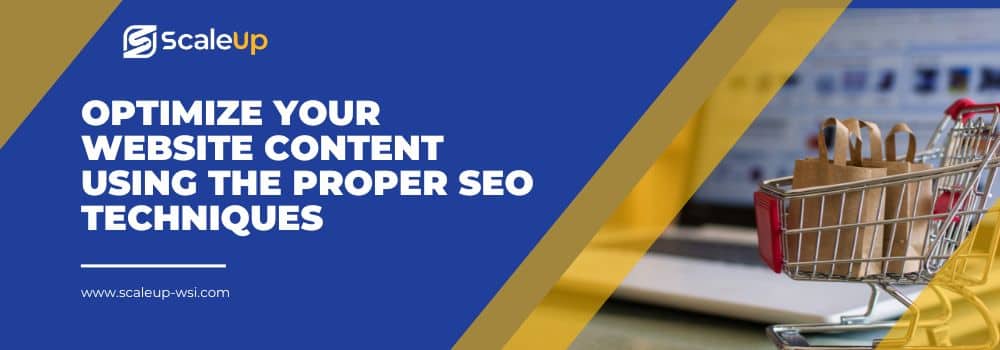
- Make use of Meta Descriptions: Craft unique and informative meta descriptions for each page of your website. It should incorporate your chosen keywords and accurately describe the page content.
- Optimize Product Descriptions: Incorporate your keywords into product descriptions in a natural manner. Ensure the descriptions are informative and engaging, and provide value to your customers.
- Incorporate Keywords into Headings and Subheadings: This helps Google understand the content of your page, improving your search ranking.
- Optimize Image Alt Text: Make sure all product images have alt text that is descriptive and includes your keywords. This helps in ranking in Google’s image search results.
- Create Quality Content: Regularly create and publish quality content that is valuable to your customers and incorporates your keywords. This could be in the form of blog posts, guides, or tutorials.
- Utilize Internal and External Links: Linking to relevant content on your own site or other reputable sites can improve SEO. Make sure the anchor text is relevant and incorporates your keywords.
- Improve Site Speed: A faster site provides a better user experience and is favored by Google. Optimize your images and reduce the use of heavy scripts to improve load times.
- Ensure Mobile Responsiveness: A significant amount of web traffic comes from mobile devices. Google favors sites that are optimized for mobile, so ensure your site is mobile-friendly.
Submit your store to Google Merchant Center and set up a product feed
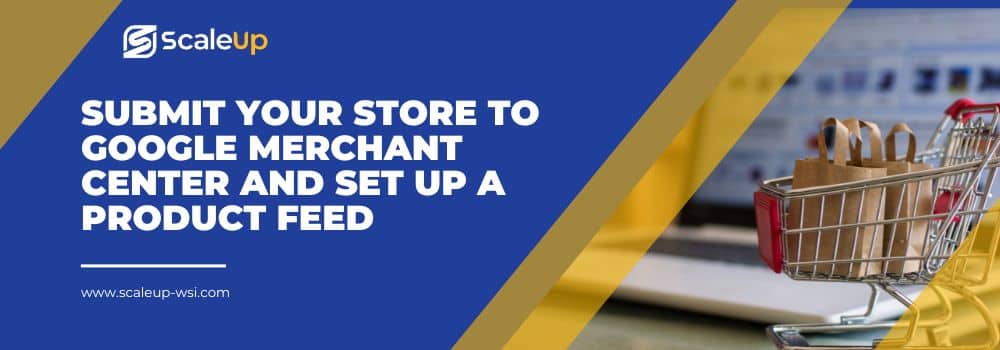
- Google Merchant Center Submission: Submitting your store to the Google Merchant Center is a crucial step in maximizing your online visibility. It’s a tool that helps you upload your store and product data to Google and make it available for Shopping ads and other Google services.
- Setting Up a Product Feed: This involves creating a list of your products in a specific format that Google can easily read and understand. The product feed needs to be regularly updated to reflect changes in your product catalog. It includes details like product ID, title, description, product category, brand, condition, price, and availability.
- Feed Optimization: Ensure that your product titles, descriptions, and images are high quality and contain relevant keywords. This not only improves the chance of your products showing in relevant searches but also improves the user experience.
- Regular Feed Update: Keep your product feed up to date. Regular updates help to ensure that your product data on Google is accurate and that shoppers are seeing the correct price, availability, and other product details.
- Promotions and Special Offers: Use the Google Merchant Center to highlight promotions and special offers. This can increase click-through rates and conversions.
- Monitor Performance: Use the performance and diagnostic reports in the Google Merchant Center to monitor how your products are performing. This can help you identify issues and opportunities for optimization.
Link your store to Google Ads and create campaigns for maximum visibility
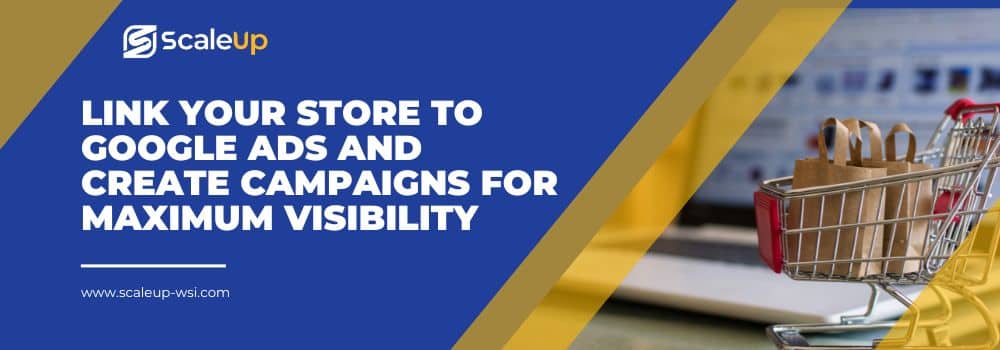
- Linking to Google Ads: To maximize your visibility, link your Google Merchant Center account to Google Ads. This allows your product feed to be used to create Shopping ads on the Google network.
- Creating Campaigns: Develop targeted ad campaigns to reach potential customers. Consider factors like keywords, demographics, and geographical location when setting up campaigns.
- Bid Strategy: Implement a smart bidding strategy to maximize return on investment. Google Ads offers various options like cost-per-click (CPC), cost-per-thousand-impressions (CPM), or cost-per-acquisition (CPA) depending on your goals.
- Ad Groups: Organize your ads into groups based on similar themes or products. This allows for easier management and tracking of campaign performance.
- Performance Tracking: Regularly monitor your ad’s performance. Use data from Google Ads to optimize campaigns, adjust bidding strategies, and refine targeting.
- Optimizing Ads: Continually optimize your ads based on performance metrics. Test different product images, titles, and descriptions to see what leads to higher click-through rates and conversions.
Monitor and improve your Adwords performance using analytics tools
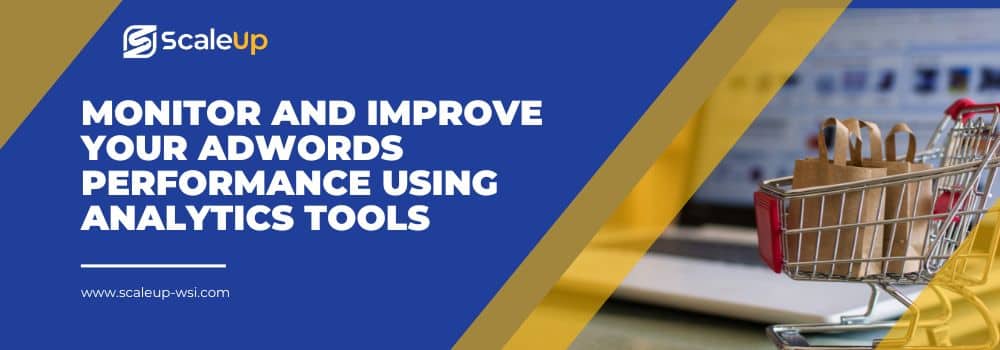
- Utilize Google Analytics: Combine the power of Google Ads with Google Analytics to gain deeper insights into how users interact with your ads and website. This can help you understand the customer journey and optimize your ad campaigns accordingly.
- Conversion Tracking: Set up conversion tracking in Google Ads to monitor how many clicks lead to desirable actions like purchases or sign-ups. This allows you to calculate your ROI and identify which ads and keywords are most effective.
- Benchmarking: Use the benchmarking features in Google Analytics to compare your performance to industry standards. This can help highlight areas where improvement is needed.
- Custom Reports: Create custom reports in Google Analytics to focus on the metrics that matter most to your business. This can streamline your analysis and make the data more manageable.
- Audience Segmentation: Leverage audience segmentation features in Google Analytics to understand the behaviors and preferences of different user groups. This can assist in tailoring your ad campaigns to better target these segments.
- Multi-Channel Funnels: Use Multi-Channel Funnels in Google Analytics to see how your marketing channels work together to create conversions. This can reveal opportunities for cross-promotion and integration.
Create a blog on related topics to engage with customers and increase brand awareness
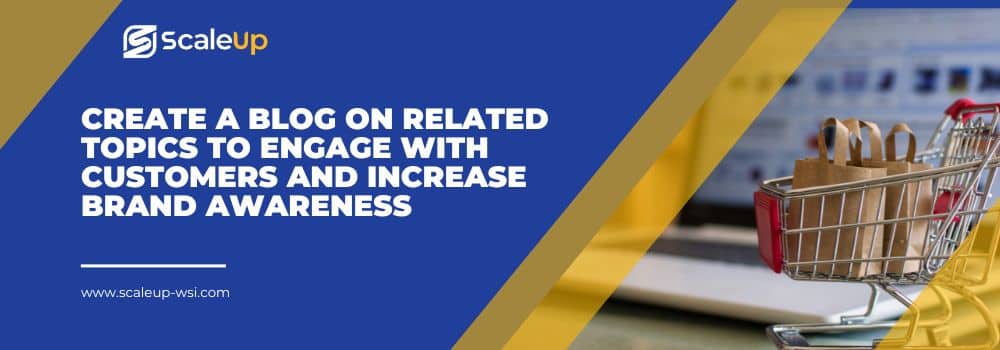
- Identify Relevant Topics: Choose blog topics that are relevant to your business and of interest to your audience. This enhances your credibility as an expert in your field and keeps your readers engaged.
- Utilize SEO Techniques: Incorporate search engine optimization (SEO) practices into your blog posts to boost their visibility on search engine results pages. This includes keyword optimization, link building, and maintaining an active blog schedule.
- Engage with Readers: Encourage reader interaction and engagement by facilitating discussions, asking for feedback, and responding to comments. This can build a community around your brand and foster loyalty.
- Promote Your Blog: Leverage your social media channels, email newsletters, and even your Google Ads campaigns to promote your blog and reach a wider audience.
- Monitor Blog Performance: Use tools like Google Analytics to track how your blog is performing in terms of traffic, engagement, and conversions. This can guide you in making necessary improvements.
- Create High-Quality Content: Ensure that the content of your blog is of high quality and offers value to your readers. This will not only improve your search engine rankings but also increase the likelihood of your content being shared, further expanding your reach.
Conclusion:
Visibility matters in the digital marketplace. Get your Shopify store on Google for wider reach, more traffic, and increased sales. Steps include setting up Google Merchant Center and Google Ads accounts, optimizing product listings for search engines, and using SEO best practices. Monitor your store’s performance, adapt strategies based on data, and create a blog to engage with customers and raise brand awareness. Consistency and quality are key. Propel your online business with the right approach and tools.
Faqs
What is Google Merchant Center and how does it benefit my Shopify store?
Google Merchant Center is a tool that enables you to upload your Shopify store and product data to Google and make it available for Google Shopping and other Google services. It enhances your store’s visibility, increases your product’s exposure to potential customers, and ultimately boosts sales.
How do I optimize my product listings for search engines?
To optimize your product listings for search engines, you should use relevant keywords in your product titles and descriptions. Make sure to provide detailed, accurate, and engaging descriptions. Additionally, include high-quality images and use meta tags effectively. Regularly update your listings to maintain their relevance.
What are some SEO best practices I should follow for my Shopify store?
SEO best practices for your Shopify store include keyword research to identify words and phrases your target audience uses, optimizing page titles and meta descriptions with relevant keywords, using alt text for images, creating unique content that adds value to your customers, and building quality backlinks.
What tools can I use to monitor my store’s performance?
To monitor your store’s performance, consider using the built-in analytics features of Shopify, like the sales overview and financial reports. Other popular options include Google Analytics, which gives in-depth insight into customer behavior, and heatmapping tools like Hotjar for understanding user interaction on your site.
What strategies can I adapt based on data?
Based on data, you can implement strategies such as personalizing marketing efforts, adjusting pricing based on demand, optimizing product placement on your site, and improving user experience. Additionally, you can use data to identify best-selling products and create promotional campaigns around them.
How can a blog raise brand awareness for my Shopify store?
A blog can raise brand awareness for your Shopify store by providing valuable content that appeals to your target audience. It can help your store be found through search engines, encourage social media sharing, position your brand as an industry expert, and keep customers engaged, thus driving more traffic and sales.
What should I focus on to ensure consistency and quality in my online business?
To ensure consistency and quality in your online business, focus on maintaining a user-friendly website, offering excellent customer service, and ensuring product quality. Consistently update your product catalog and stay connected with your customers through social media and email marketing. Regularly review analytics to fine-tune your strategies.
How can I engage more effectively with my customers through my blog?
Engage more effectively with your customers through your blog by creating valuable and interactive content. Use surveys, contests, or comment sections to encourage dialogue. Tailor content to your audience’s interests and provide practical advice linked to your products, promoting meaningful customer interaction and loyalty.
How can I leverage social media channels to promote my blog and reach a wider audience?
Leverage social media channels to promote your blog by sharing links to your blog posts, using relevant hashtags to increase visibility, and engaging with followers directly. Regularly post diverse content, collaborate with influencers, and utilize paid advertising to reach a wider audience and drive more traffic to your blog.
How can I use Google Analytics to track how my blog is performing?
You can use Google Analytics to track your blog’s performance by monitoring metrics like page views, bounce rate, session duration, and traffic sources. This tool also helps identify the most popular content, understand user behavior, and refine your content strategy based on data-driven insights.
